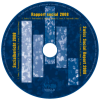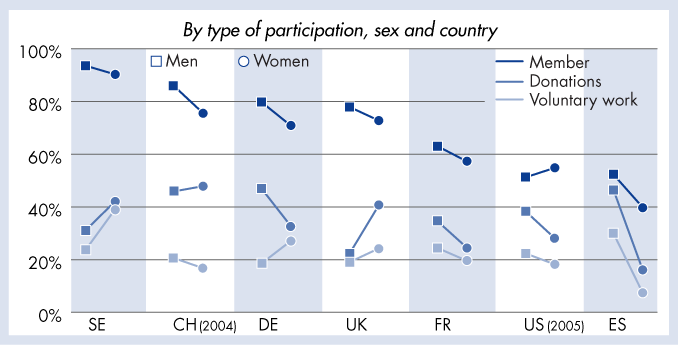Social integration
Organised voluntary work
![]()
Commitment to at least one organisation 2002 - By type of participation, sex and country
Definitions/comments: Percentage of respondents for whom a voluntary organisation is of importance, or has been so in the last 12 months. Respondents were asked about 12 types of organisation and had to differentiate between member, participation in activities, donations and voluntary work. ‘Member’ and ‘participation’ were merged because they refer to a similar level of commitment.
Question wording: ‘For each of the voluntary organisations I will now mention, please use this card to tell me whether any of these things apply to you now or in the last 12 months, and, if so, which. Firstly, a sports club or club for out-door activities? an organisation for cultural or hobby activities? a trade union? a business, professional, or farmers’ organisation? a consumer or automobile organisation? an organisation for humanitarian aid, human rights, minorities, or immigrants? an organisation for environmental protection, peace or animal rights? a religious or church organisation? a political party? an organisation for science, education, or teachers and parents? a social club, club for the young, the retired/elderly, women, or friendly societies? any other voluntary organisation such as the ones I’ve just mentioned?’ The list in the US-CID is somewhat longer; we only used the types of organisations included in the ESS in our analyses.
Answer categories: ‘none’, ‘member’, ‘participated’, ‘donated money’, ‘voluntary work’.
Sample size: ESS 2002: 1503–2995, ESS 2004: 2141, US-CID 2005: 1001; weighted data.
Source: ESS 2002, ESS 2004 (CH), US-CID 2005 (US).
Data for the indicator or in excel.
Description and explanation in the corresponding chapter of the Social Report 2008.

